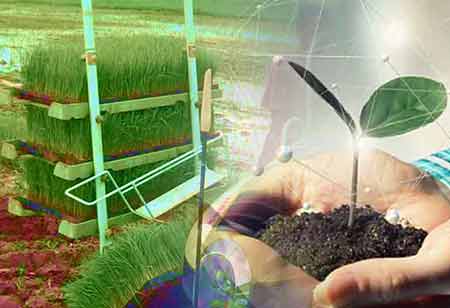Thank you for Subscribing to Agri Business Review Weekly Brief
Redefining how Farming Equipment is Controlled and Tracked Remotely

By
Agri Business Review | Friday, July 01, 2022
Stay ahead of the industry with exclusive feature stories on the top companies, expert insights and the latest news delivered straight to your inbox. Subscribe today.
Farmers are using cutting-edge tools like drones and the Internet of Things to solve new problems in agriculture.
Fremont, CA: When considering industries on the cutting edge, the agriculture sector doesn't frequently spring to mind. Nevertheless, agriculture has continued to advance through each industrial revolution. Forward-thinking farmers are beginning to implement high-tech solutions to deal with the fresh issues the sector is experiencing.
Precision agriculture, automation, robotics for livestock, artificial intelligence, and livestock technology are all ways to harness the power of emerging technology to bring farming into the twenty-first century.
Regardless of the period, farmers confront the same difficulties, such as rising operational expenses and labor scarcity. It is made worse by the fact that the demand for agriculture is growing along with the global population. The Internet of Things (IoT) now allows the agriculture business to increase efficiency while lowering costs, directly addressing the demands and problems of the Fourth Industrial Revolution.
IoT Use Cases in Agriculture:
The application cases will probably expand as the industry uses more IoT devices. But these are the main IoT applications in agriculture.
• Precision agriculture
Precision agriculture provides data to enable precise, data-driven decision-making and more effective operations. For example, farmers may get information from IoT sensors on almost every statistic crucial for making decisions, including temperature, humidity, soil quality, lighting, CO2 levels, insect infestations, and disease. With this information, farmers may determine how much water, herbicides, or fertilizer to cut costs and produce better crops and cattle.
• Climate monitoring
Information about the environment may get gathered using climate monitoring tools, such as weather stations with sensors. Then, farmers may map the controls on the climate and maximize crop capacity. Since these sensors are frequently situated in remote sections of the country, they can make faster and more precise measurements of the growing environment.
• Agricultural drones
Compared to aircraft or satellites, agricultural drones provide more accurate data. They may take the role of humans in several tasks, including herding cattle, eradicating pests, spraying, keeping an eye on crops, and planting crops.
• Predictive Analytics
Precision agriculture includes predictive analytics as one of its components. Farmers may benefit from real-time data in numerous ways, but the analytics component enables them to use it for improved forecasting and optimization.
Weather conditions have a great deal of influence over farming, but data analytics may help farmers prepare for and handle the unexpected. Predicting future precipitation, for instance, can assist farmers in adjusting irrigation to prevent over-or underwatering and maximize the use of fertilizers.





